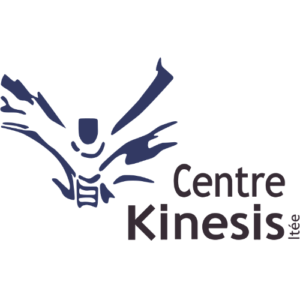Osteopathy is a generally gentle therapeutic manual approach that aims to restore mobility to restricted structures (joints, muscles, fascias, organs (viscera), skull, etc.) with the aim of restoring vitality, improving movement and circulation and allow the body to normalize and eliminate its compensations.
For example, a person who makes a wrong move and gets the D6 vertebra stuck (between the shoulder blades), will first feel a sharp and intense pain that often resembles a “stabbing sensation”. The body will then place itself in a protective mechanism to protect itself and it will be blocked by the stiffness and tensions that gradually set in. To counter pain, spasms and fatigue, the body will compensate: changes in posture, decrease in functional capacity and energy, etc. A displaced vertebra or stuck in a bad position can irritate the nerve root that comes out through the foramina of this vertebral level. In addition to causing pain, an irritated nerve can lead to a functional decrease in the organs it innervates. For example, the stomach is innervated by nerves coming from the D5 to D9 vertebrae and the vagus nerve at the cranial level. Continuing our previous example, our famous blocked D6 vertebra could therefore lead to digestive difficulties, such as gastric reflux or bloating.
The osteopath approaches the problem with a global vision of the body and takes into consideration all the physical and emotional factors that can disturb the patient's homeostasis (the body's ability to remain balanced and functional). He has several types of manual techniques to release tension: the techniques myofascial (balancing techniques, tensioning, myofascial release, etc.), the 'muscle-energy' which combines muscle contractions and stretching, cranial and cranio-sacral techniques to restore vitality to the body, promote hormonal balance, reduce inflammation and pain, mobilizations to regain joint amplitude as well as osteo- (similar to chiropractic manipulations, but gentler) to correct a displaced vertebra or joint, fluid techniques to improve circulation and reduce edema (swelling), emotional release techniques, to eradicate tissue memories trauma, visceral techniques to release tension on the organs in order to improve hormonal, digestive, respiratory, gynecological functions...
Since the osteopath seeks to release the compensations and constraints imposed on the body by seeking the cause of the problem rather than focusing solely on the symptoms and that these compensations occur in the medium and long term (chronic condition), it is necessary to rely on a few sessions (usually three close together) before feeling well-being. Thereafter, treatments every four to six weeks and then as needed are offered.
As a result of its gentle approach, osteopathy is an ideal treatment for all ages, including newborns.


Leave a Reply
Want to join the discussion?Feel free to Contribute!